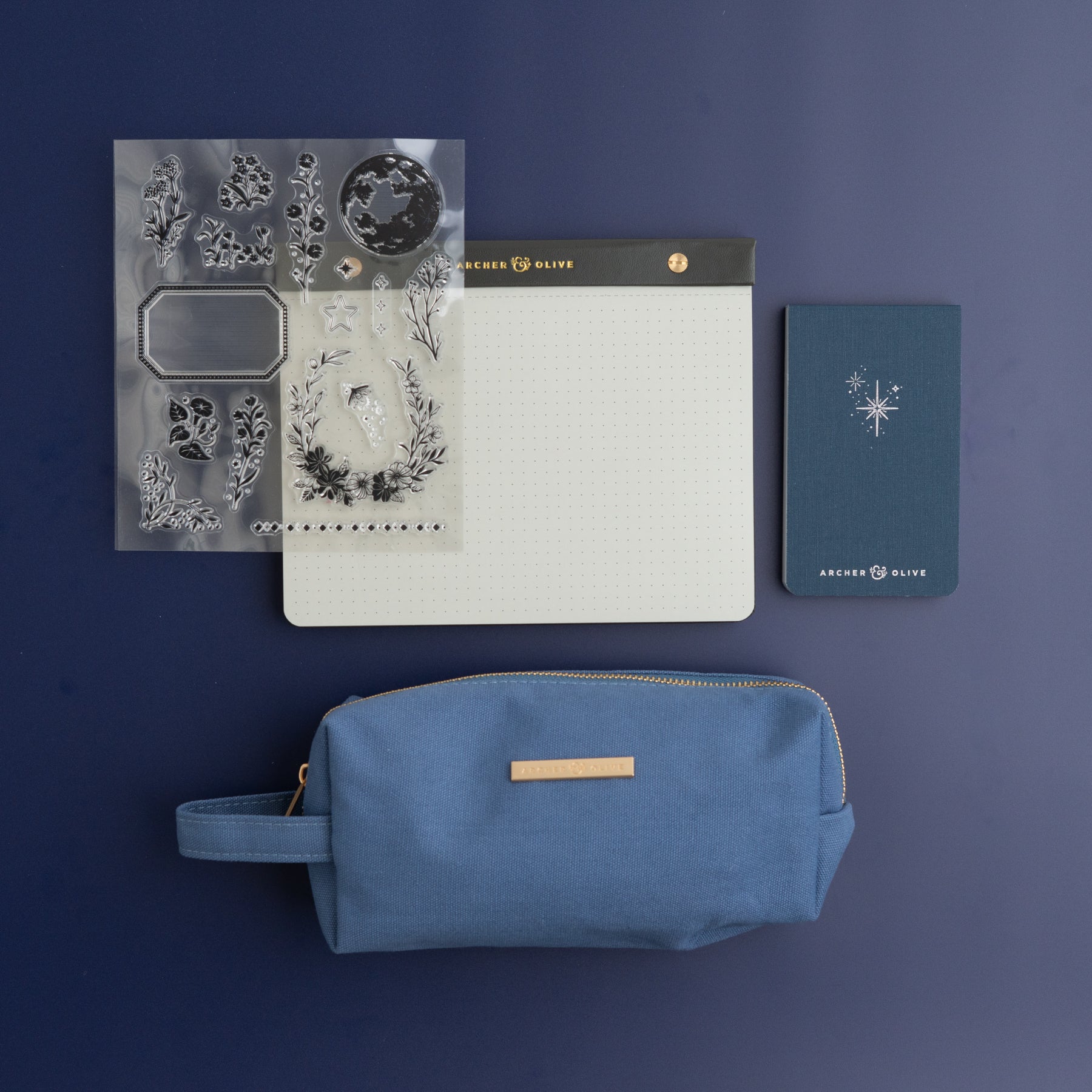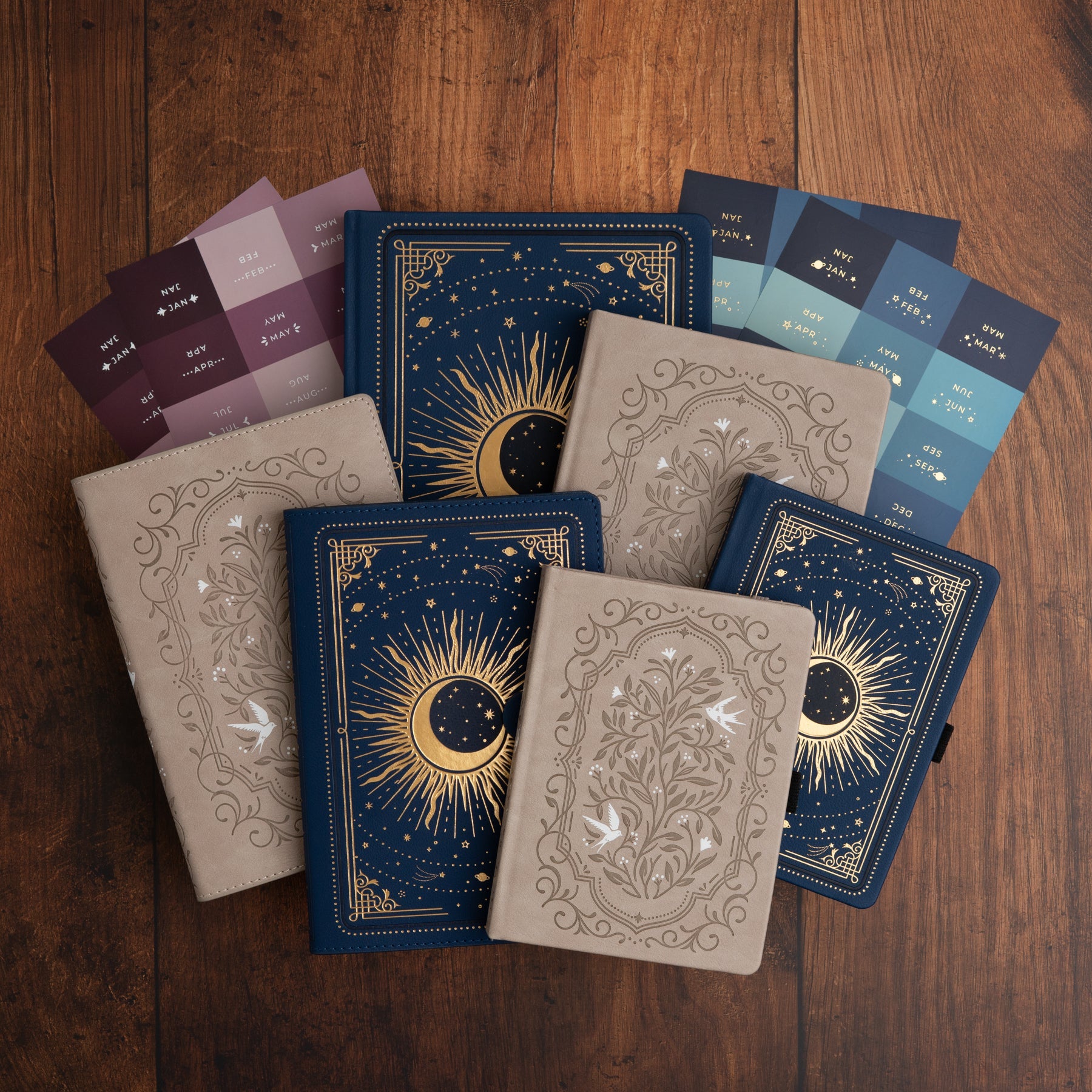Hello everyone, this is Quinn from zquinns_art on Instagram. I have been learning Chinese for the past two years, and I’ve been using my bullet journal to help facilitate my own learning. Bullet journals offer the creative freedom to help in self-studying a language that textbooks and workbooks don’t offer. Through this blog, I hope to provide different spreads and language learning methods that can be helpful in your own learning journey!

This blog is divided into four main sections on ways that you can use your bullet journal while learning a language. You can use these methods in any combination you like depending on what you need to practice.
- Journaling- This section is for people who want to incorporate their target language into their everyday lives.
- Reference pages- easily accessible pages with information you’ll go back to multiple times.
- Vocabulary practice- different exercises and spreads to work on your vocabulary.
- Goals and trackers- ways to keep track of your progress as you go on your language learning journey.
Journaling
One of the easiest and best ways to practice your language is to incorporate it into your daily bullet journaling practices. As you learn new vocabulary, you can write more and more of your daily journaling using that language. Here are some ways you can slowly add more of your target language into your journal:

-
Start with writing the days, months, and your tasks for the day. The date is an easy and repeatable task that you can write every day. It’s a great way to learn the months, days of the week, and some of the numbers very quickly. Bonus points if you write out the numbers fully. For example, try writing the full date: Sunday, March thirteenth instead of just 3/13.
Then you can start to write your tasks for the day. This may be more difficult as you’ll need more vocabulary to fully write some of the tasks. So try starting with vocabulary you already know or tasks that you do very often. For example, I go to a dance class each week, so I can look up the vocabulary for “dance class” and write that in for each Wednesday night. In contrast, I might just write the one-off task of replying to an email in English. It’s okay to use a mixture of languages, you don’t want to make language learning too difficult.

1. Try writing short paragraphs about something you did that day in your target language. This is a great way to learn new vocabulary and practice grammar structures. If you look at the paragraph I wrote here, you’ll see I put a vocabulary list on the right side fpr new words that I used. This way I can reference the words and add them to my flashcards or vocabulary spreads in the future. This is a great method as you are choosing words that are directly relevant to your life and what you are doing.
When you make these, try to leave room for corrections. You can bring your paragraph to a friend or teacher to help you correct what you’ve written to also help you learn.
2. Work towards journaling entirely in your target language. This is easier said than done, but it is a great way to incorporate your language into your life. I follow a similar method to Lindie Botes, a language learning YouTube and app developer. She will journal for the day but only use the words she knows in the language. If she doesn’t know a word or grammatical structure, she doesn’t worry about it and will just use her native language. This way you are still writing as much as possible without putting too much stress on yourself. The goal is to eventually be able to use the language entirely, but it’s something to work towards, not completely perfect the first time.
Reference Pages
Reference pages are ones that you will be going to over and over again. These can be pages with important grammatical concepts, vocabulary, or even something like the alphabet in the new language. It is helpful to flag or distinguish these spreads. You can simply put them in an easy-to-find place like the front or back of your notebook, you can make them on a separate sheet and put it in the folder of your journal, or you can use stickers, bookmarks, or sticky notes to make it easy to flip to those pages.

- Alphabet- If the alphabet of the language you are learning is different from your native language, it can be very helpful to have a spread where you write out each letter and the sound(s) that it creates. The image above is from my fellow design team member, Icy’s language journal. She wrote out the vowels using Hangul, the Korean alphabet. While this spread would go best on a separate sheet of paper so you can pull it out and use it while you are writing or reading, you can also put the spread at the beginning, as Icy did, for easy access.
- Grammar- It can be very useful to have integral grammatical concepts easily available. This can be conjugation charts, common uses of words, mistakes you tend to make repeatedly, or common grammatical structures. These pages make it easy to reference information as you are writing in your target language! For me, I like to include a page regarding the different tones in Mandarin Chinese so I can remember how to pronounce the words while I practice.
- Resources- This spread is a great way to keep track of useful resources you find on your language learning journey. These resources can include books, textbooks, tv shows, movies, podcasts, youtube channels, language websites, or anything else you use while you study. It’s also a great place to add resources that others suggest to you.
Vocabulary Practice
Memorizing vocab is the most important and the most difficult part of learning a new language, so it is important to find ways to learn new words that work best for you. Here are some suggestions:

- Doodle pages- for those who are more artistic, making doodle pages can be a great way to make learning a new word capture multiple sides of your brain. By drawing out the word as well as writing them, you are more likely to remember the vocabulary word. Hello.weiwei created this beautiful spread above to demonstrate this technique. This is a spread of some of her favorite things labeled in Chinese.
You can even try drawing a room in your house to label different things you live with.

-
New vocab pages- Try creating pages dedicated to a set of new words that you find or that you particularly struggle with. Create a page where you write the new word, the definition in your own words, and a few example sentences. Then try different exercises such as trying to use as many of the new words in a single sentence. It’s definitely a lot of work, but the more you work with a word, the more likely you are to remember it.
To see how I set up and use my vocabulary page in a bit more detail, feel free to check out my video. While I am learning Chinese, some of my techniques can be applied to other languages as well.
- Related words- When you have these vocabulary pages, it can also be helpful to write out words that are related to the new ones. These can be words in a similar category, or words with similar prefixes or suffixes, or anything else you can think of to connect them. For me in Chinese, I like to write words with similar parts of the character. Each Chinese character is made of different parts, many of which are repeated in other characters. By drawing those connections, it makes it easier for me to remember.
Goals and trackers
A great way to encourage studying habits is to see your progress and reward consistency. There are many ways to incorporate goals and trackers into your language learning, and since most other articles and blogs out there cover this information, I will be brief. Here are a few trackers and goals spread ideas you can use:

- Duolingo/language app trackers. You can follow your progress through various language learning applications. Most will have set lessons, so you can use those as the basis for showing your progress. One beautiful example is the one above, created by northernplannermom on Instagram as she studies Italian.
- Textbook trackers: Similar to the language app trackers, you can create trackers based on the chapters and lessons of your textbook. As you complete and section, you can mark it off.
- Daily practice tracker: Create a traditional monthly tracker and cross off each day that you practice different language skills
- Monthly goals: Set up a goal page with language goals you want to reach that month, e.g. write in your journal every day or read at least two books. Then add information about how you are going to accomplish those goals: are you putting in a reward or punishment system? do you have to write at least one sentence? or a whole paragraph?
I hope you were able to find a few good tips here that you can start implementing. I enjoy learning languages, but the best part is when you can incorporate your practice into your daily life. As you can tell, most of my techniques fit in the category of making language learning personal to you. Bullet journals definitely make that an easy task!
Below are some printables of the vocabulary pages that I created in the video. The first page is for any language while the second is specifically geared towards Chinese characters and vocabulary. If you end up using these printables or creating some of these spreads or just found one of my tips helpful, feel free to tag me or Archer&Olive in a post or reach out! I want to see what y’all are learning. Just a reminder: you can find me on Instagram at zquinns_art. Happy learning!












0 comments